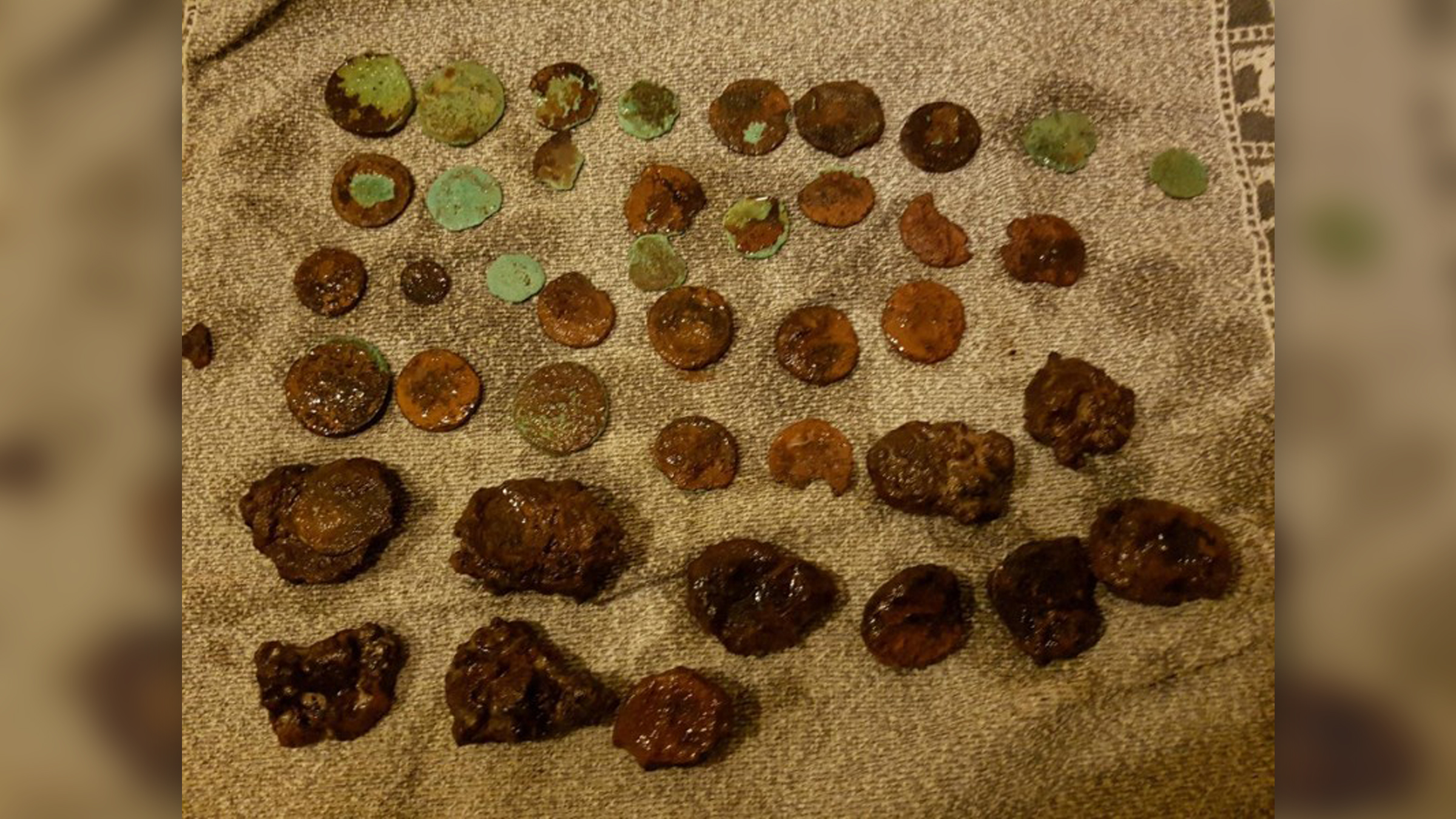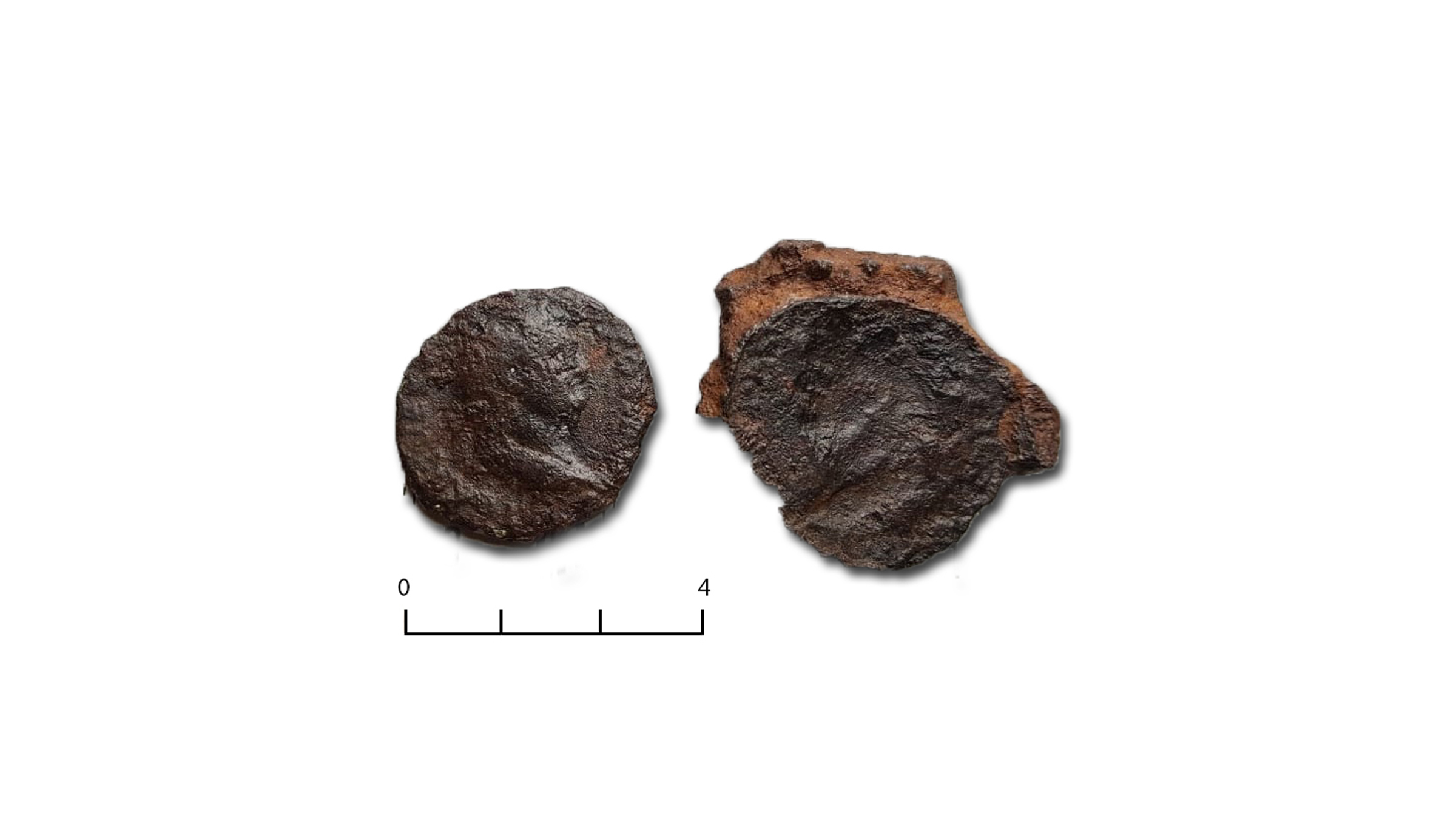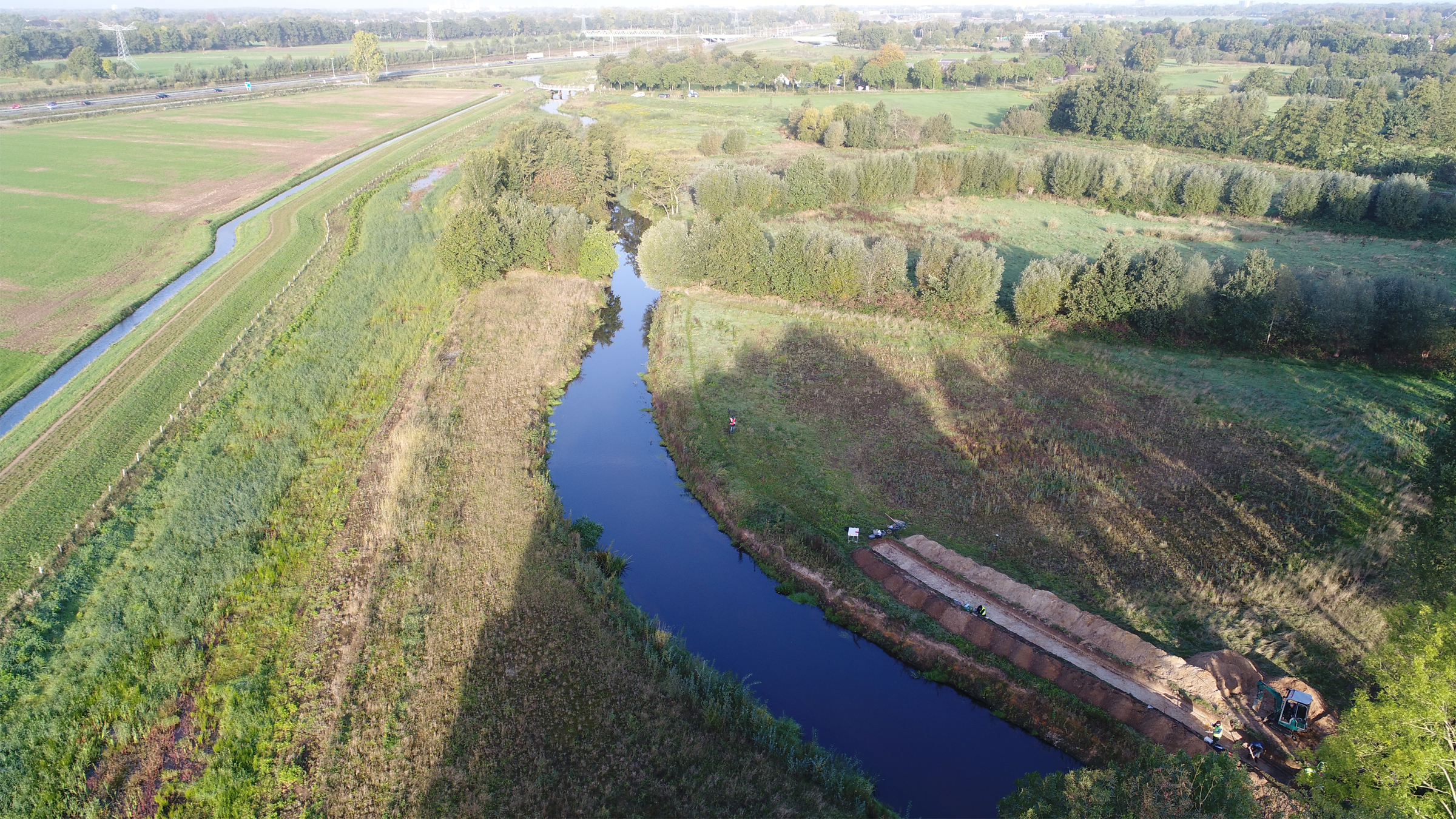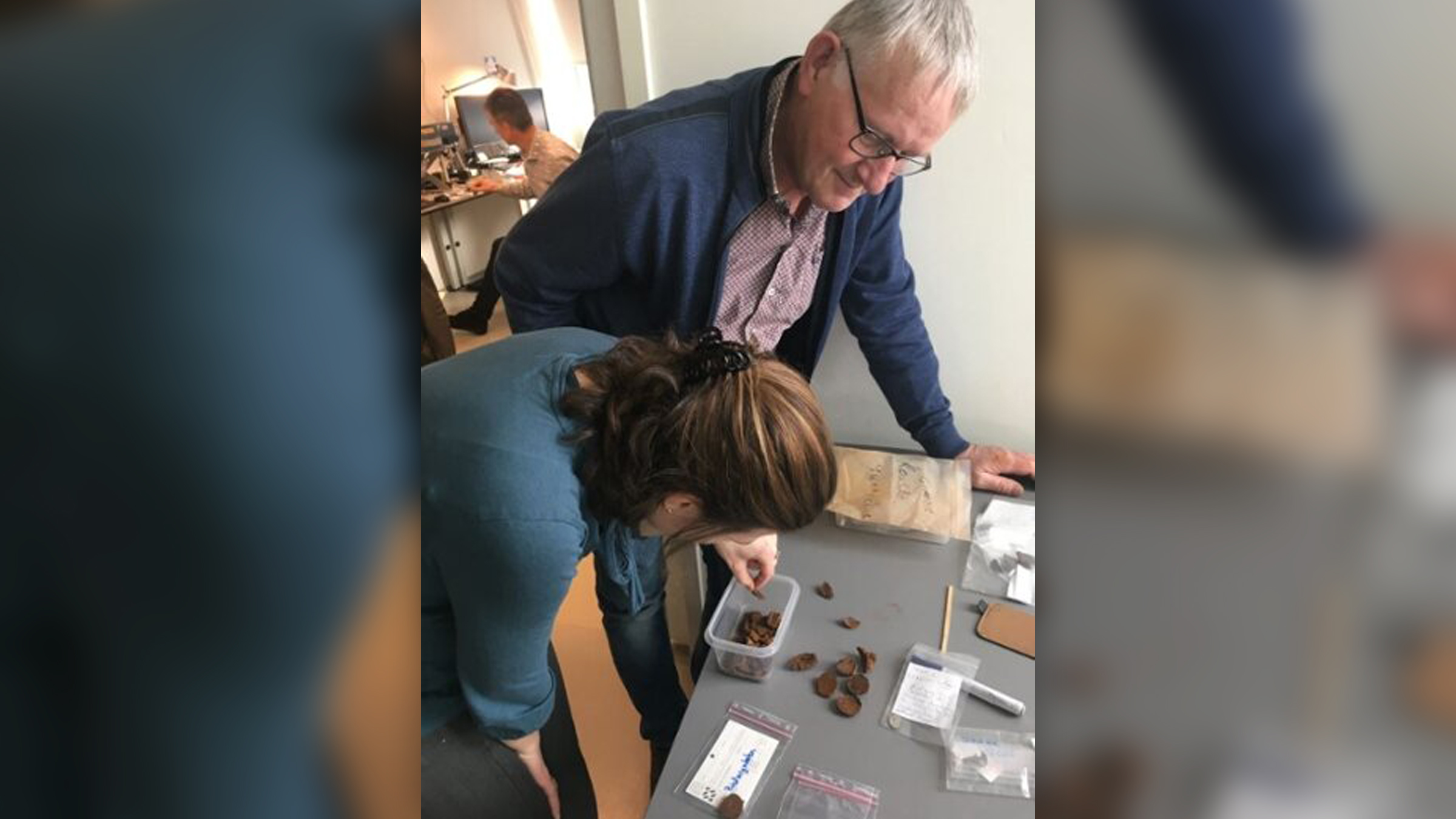100 Roman coins were likely an offering for safe passage across river
Many of the coins featured military imagery.

When amateur treasure hunters discovered 107 ancient Roman coins on the banks of a river in the Netherlands at the end of 2017, they had no idea why the coins were there. Now archaeologists have cracked the case.
In Roman times, there was likely a shallow crossing known as a ford at this narrow part of the river, and superstitious travelers probably offered up coins to guarantee safe passage across the waterway, like a wisher throwing a penny into a fountain, archaeologists wrote in a report released June 6 by the Cultural Heritage Agency of the Netherlands.
Many of the coins had military imagery, which may echo the earlier local practice of placing war-related objects, such as axes, swords and helmets, along rivers and other stretches of water, said the report's co-researcher Liesbeth Claes, an assistant professor at Leiden University in the Netherlands. "This could be a pre-Roman custom that continued in the Roman period but in a different way," Claes said in a statement. Deducing that this practice persisted "was an important eureka moment in my academic career."
Related: Photos: Roman-era silver jewelry and coins discovered in Scotland
Amateur archaeologists, brothers Nico and Wim van Schaijk, found the coins with metal detectors along the Aa river in the village of Berlicum. The stash included four silver denarii and 103 bronze sesterces (worth one-quarter of a denarius), as well as axes. After the van Schaijks reported the find to the Portable Antiquities of the Netherlands, an agency that catalogues artifacts found in the country, archaeologists found a bronze pendant from a horse harness and two more Roman coins at the site, bringing the total to 109 coins. All of the coins were minted between 27 B.C. and A.D. 180, while the pendant dated to between A.D. 120 and 300.
The fact that these coins weren't overly valuable (there weren't any gold coins, for instance); were scattered over a large area and not buried together in a "chest or amphora;" and were minted over a period spanning over 200 years suggested that the coins weren't hidden by one person or group as a single treasure trove, but were likely "deposited by different people over a long period," Claes said.



During the team's analysis of the site, they found a document dating from 1832 that noted a path cutting across the river. "Apparently, there was a ford on this spot, where people could wade through the river," Claes said. "Later, the ford fell into disuse. This information, together with the find of the coins, convinced us that travelers in Roman times brought offerings here for a safe crossing."
Sign up for the Live Science daily newsletter now
Get the world’s most fascinating discoveries delivered straight to your inbox.
Even though the river isn't a rapidly flowing one, "For traders, in particular, it was important to be able to transport their goods safely to the other side," she said. "And there's also the fact that in ancient times, rivers always had some sacred connections," which would support the hypothesis that the coins were offerings.
Archaeologists have yet to find concrete evidence of a ford from Roman times at the site. But they're hopeful that future excavations may unearth clues of its existence, they wrote in the report. What's more, although the team commended the amateurs for discovering the coins, going forward "It is advised not to allow metal detection in the advisory zone, so that existing coins and other metal finds are not taken out of context without an archaeological investigation," they wrote in the translated report.
Originally published on Live Science.

Laura is the archaeology and Life's Little Mysteries editor at Live Science. She also reports on general science, including paleontology. Her work has appeared in The New York Times, Scholastic, Popular Science and Spectrum, a site on autism research. She has won multiple awards from the Society of Professional Journalists and the Washington Newspaper Publishers Association for her reporting at a weekly newspaper near Seattle. Laura holds a bachelor's degree in English literature and psychology from Washington University in St. Louis and a master's degree in science writing from NYU.










